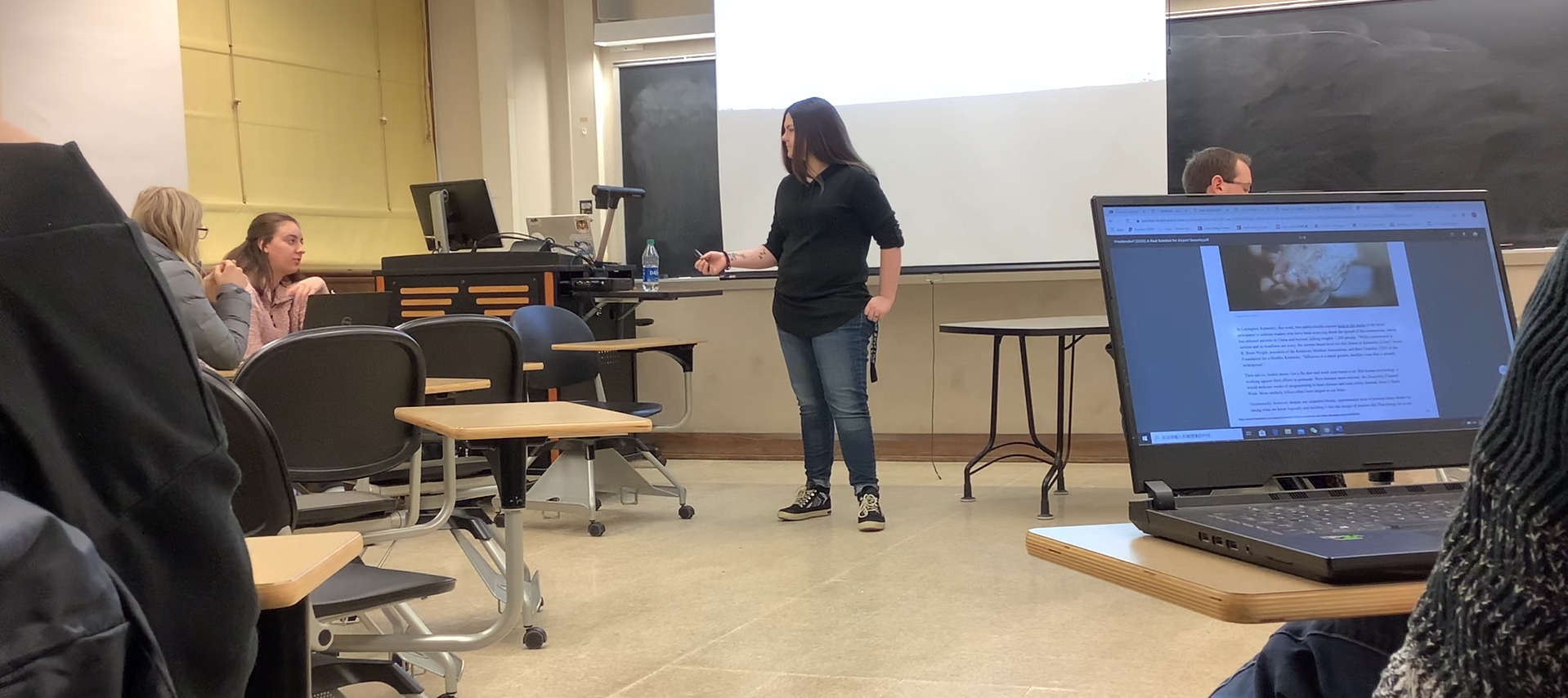Teaching Philosophy
teaching philosophy

Teaching philosophies are always evolving. As a disabled scholar-researcher, my ambitious goal is to bring accessibility and intersectionality into conversation with technology in the classroom. Our world is mediated by technology; I believe it’s important to teach students not just how to write for different technologies, but to question what writing in a technologically mediated world means and to interrogate how texts are accessed by different bodies. I am always adjusting my approaches to teaching as I learn and gain new experiences within the classroom. Incremental progress is still progress.
I never saw myself as a teacher. As a department trainer in industry, I saw myself as a technical communicator first and a teacher second. However, that began to slowly shift as I moved from writing manuals, editing documents, and managing resource databases to creating curriculums, developing outcomes, and assessing progress. My time as an industry professional gave me experience with creating, distributing, and engaging with technical communication, as well as with teaching others how to do the same. This also means I have firsthand experience with how technical communication foregrounds whiteness, masculinity, and ability (Jones, Moore, & Walton, 2016), and how these norms can be perpetuated through education. However, I believe these norms can be undone and the important work of un-learning dominant narratives can be facilitated in the classroom. To disrupt and decenter dominant narratives in both industry and education, I adopt crip and feminist theories to create accessible spaces, foreground marginalized identities, and promote empathy and care.
Accessibility is at the heart of my pedagogy. Addressing accessibility as a starting point is key to reframing norms for the classroom and should never be an afterthought. This requires taking a critical look at institution-provided boilerplate templates and at course materials. Boilerplate accommodation policies often utilize language that enforces an institutional hierarchy wherein Other must be accommodated by registering Otherness. This places unnecessary hardship on the student to seek accommodation for what should already be accessible, leading to access fatigue (Konrad, 2021). Rather than utilizing boilerplate accommodation policies, I have written my accommodation policy to reframe what I need from students. I don’t require a letter affirming a student’s Otherness, recognizing that obtaining accommodations can be a difficult—and often ableist—process. Instead, I aim to address accessibility through critical attention to course design, thereby reducing access fatigue. I provide materials in multiple modes and test for access using accessibility tools. Lecture notes, recordings, videos, transcripts, and slides are always available, ensuring students can engage with the course in whatever way works best for them. These practices emphasize the student’s humanity over their institutional role within the university, allowing room for students to focus on learning rather than on their body’s acceptability within the classroom.
As an instructor at a PWI-STEM institution, most of my students are young, white men who are not writing majors; rather, they are computer scientists and engineers. My goal in this space is to prepare students to communicate in a diverse and technologically mediated world by foregrounding marginalized voices and providing tools to critically analyze communication and design practices. In my technical writing class, students first study the ethics of research testing by reading and hearing stories from marginalized populations impacted by unjust research practices. They then obtain CITI certification in social/behavioral research before designing and conducting usability tests on artifacts and spaces. Where students are testing existent artifacts, this project gives them the opportunity to analyze the purported audience, determine how the audience’s needs are (and are not) met, and communicate their findings to stakeholders. After hearing from a person with disabilities speak about their experience navigating spaces, students worked in groups to explore campus with an eye towards accessibility. Where our campus is primarily composed of pre-ADA buildings, not every building is required to include accessibility features; many have been retrofitted, to differing degrees of success. One student group tested the automatic door buttons for ten buildings, finding only six working accessible entrances. The groups then compiled their findings into brief reports, only to find another pain point: the stakeholder was unclear on institutional websites, making accessibility complaints difficult to resolve. This framework provided students with hands-on experience in analyzing diverse audience needs, applying user-centered approaches, and crafting ethical communication. One student used their usability testing project to apply to graduate programs in Social Work and Public Policy.
Within the classroom, I look at my role as a facilitator. I believe this is important, as it enables me to promote empathy and care by flattening the hierarchy that exists within the classroom. This allows for moments that decenter accepted classroom norms and disrupt power dynamics. I begin every class and conference by checking in with students. Each person in the classroom brings with them experiences—both immediate and past— and identities from which they navigate materials and assignments. Recognizing these experiences, celebrating their wins, and acknowledging their losses allows me to facilitate their learning experience within my classroom, destabilizing hierarchical expectations and promoting empathy and care within higher education.